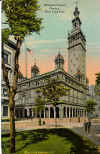 |
New York
Architecture Images- Gone Madison Square Garden |
|
architect |
McKim, Mead and White |
|
location |
Fifth and Madison Avenues 26th and 27th Streets |
|
date |
1890 (demolished in 1925) |
|
style |
Renaissance Revival (tower design was based on the Moorish Giralda Tower in Spain). |
|
construction |
Stone |
|
type |
Venue |
|
|
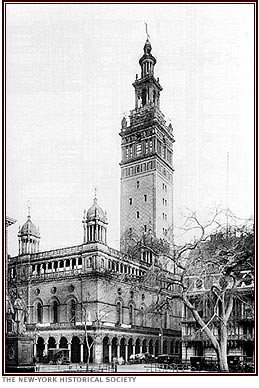 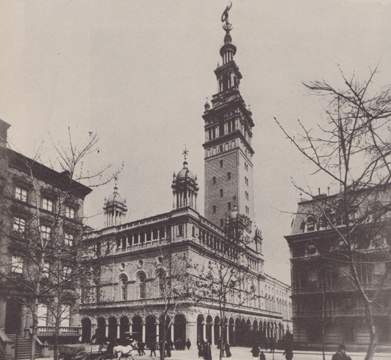 |
|
images |
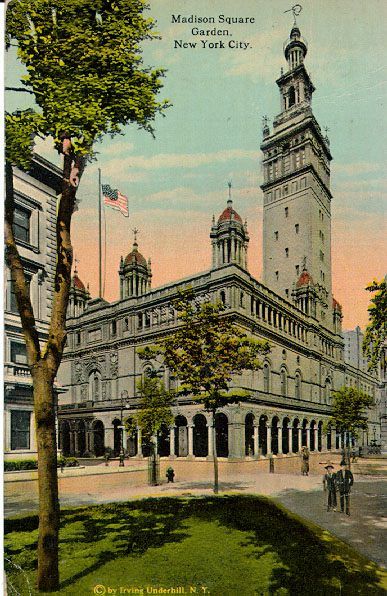 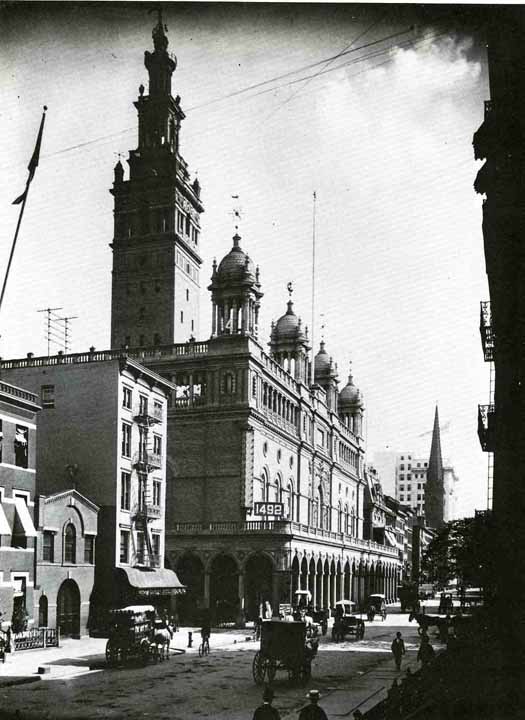 |
|
|
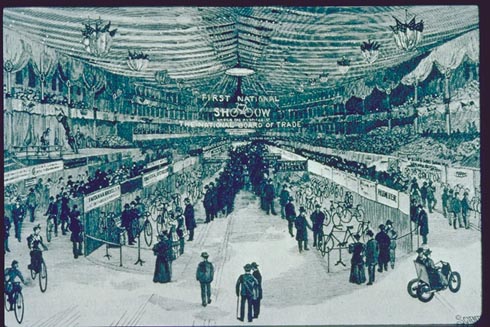 |
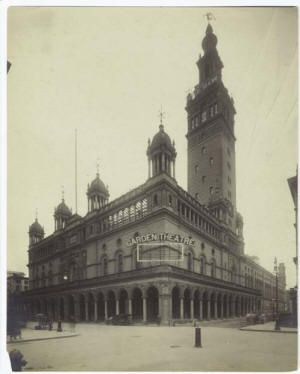 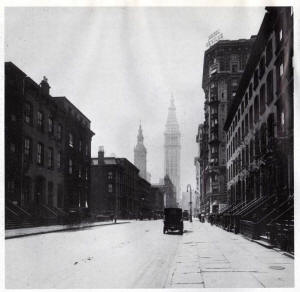 |
|
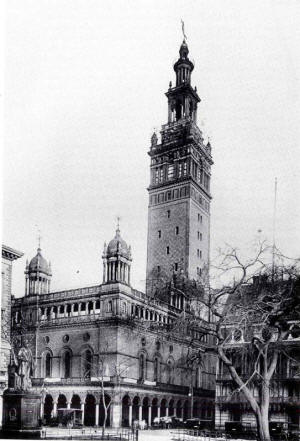  |
|
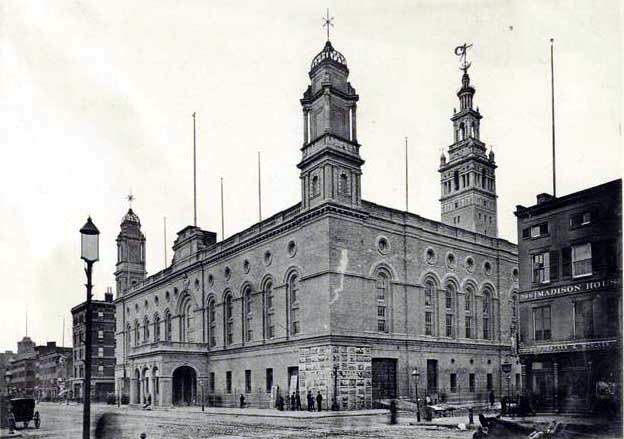 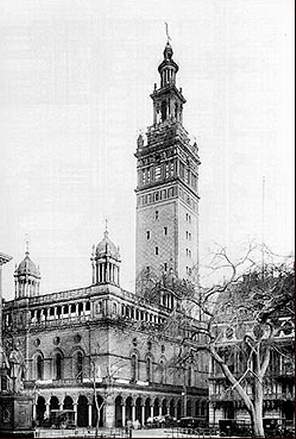 |
|
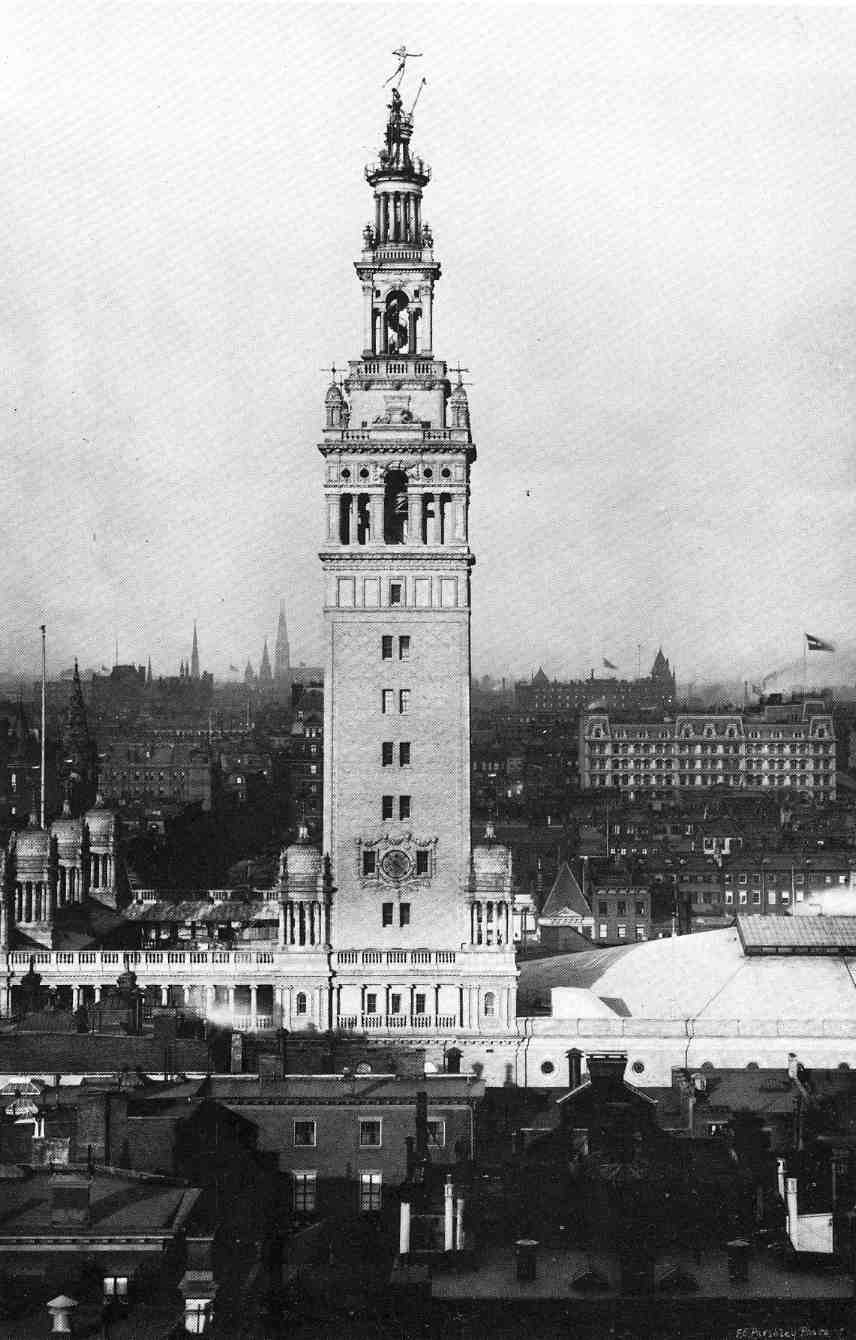 |
|
|
notes |
White designed the second of four successive buildings with the name Madison Square Garden, all built in the same place as the first. White's massive facility featured the largest amphitheater in America, equipped with a tank for aquatic shows. White's apartment, where he began his affair with Evelyn Nesbit, was in the tower, which was capped with a controversial nude statue of Diana, the Roman goddess of the hunt. Harry Thaw murdered White in the rooftop theater of this landmark. |
| During Demolition: | |
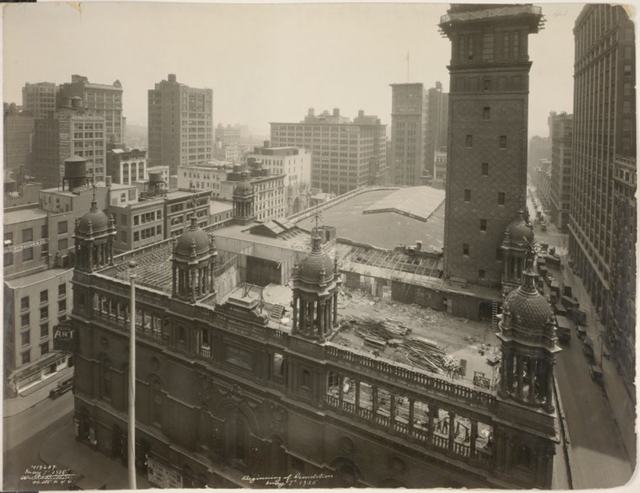 |
|
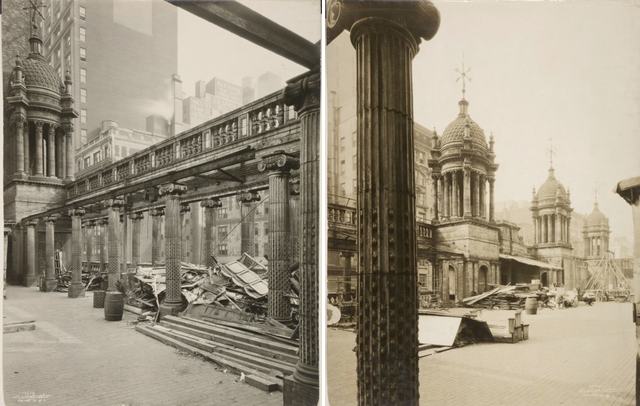 |
|
| Previously on the site: | |
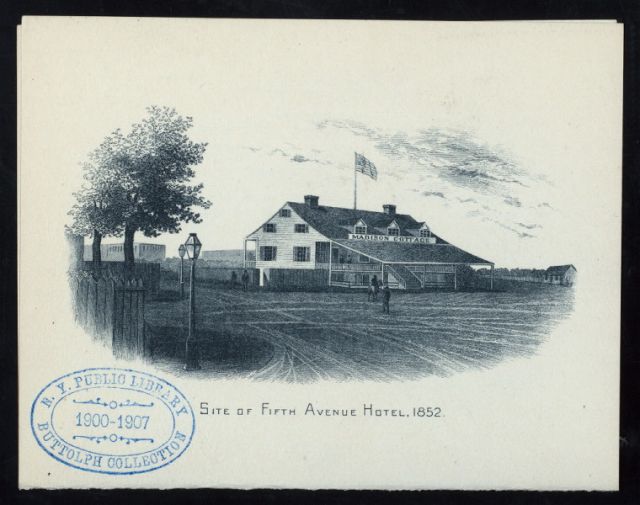 |
|
| The MSG today (on 34th Street): | |
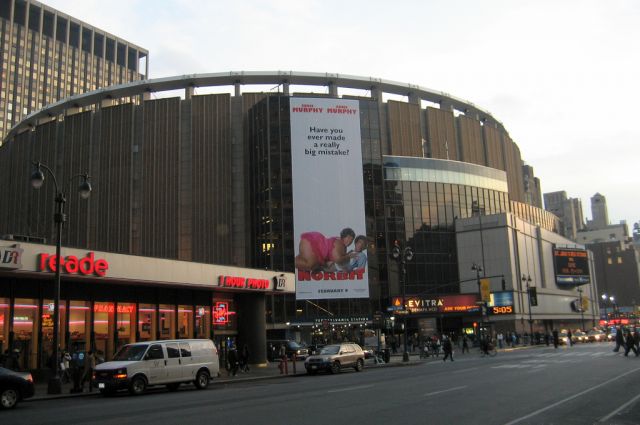 |
|
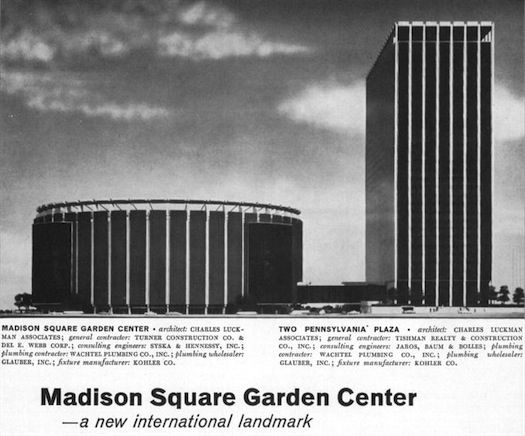 |
|
|
The new structure was 200 feet by 485 feet of Moorish architecture with a
minaret-like tower soaring 32 stories over Madison Square Park. The Garden's
main hall, now the largest in the world, measured 200 by 350 feet with
permanent seating for 8,000 people and floor space for thousands more.
In addition, the building contained a 1,200-seat theater, a concert hall with a capacity of 1,500, space for the largest restaurant in the city and a roof garden cabaret. The final bill for all this was a princely $3 million, including the still uncompleted tower. The New York Times rated the new Madison Square Garden as "one of the great institutions of the town, to be mentioned along with Central Park and the bridge of Brooklyn." Puffing the date in perspective: James Naismith had not yet received his doctorate and was still nearly two years away from nailing up peach baskets at either end of a gym in Springfield, Massachusetts; the silver cup donated by Lord Stanley would not be awarded for another three years; and the United States now numbered 43. The opening night celebration was attended by 17,000 people, some of whom paid as much as $50 per head. In the audience were some of the wealthiest, most influential figures of the age: J.P. Morgan, the Pierponts, the Whitneys, General William Tecumseh Sherman, and the architect Stanford White, White, ironically, would spend his last hours in the roof garden cabaret 16 years later. It is a story that still fascinates. Stanford White was not only America's leading urban architect but also one of the most notorious of playboys. His name had been linked with many of the beauties of the age, including the Floradora Girls who performed nightly at the Garden¹s Casino. One of those girls was a beautiful young woman named Evelyn Nesbitt who had married a Pittsburgh millionaire named Harry Thaw. White's name had been romantically linked with Nesbitt before and after her marriage to Thaw. On the night of June 25, 1906, Thaw was attending a dinner-show with his wife at the cabaret, when he rose to leave the dining room, he suddenly turned on his heel and walked to White's table where he drew a revolver and fired three times at White's head. White died in the building he designed, Thaw after one hung jury, was found not guilty by reason of insanity. The story has been depicted in several movies, notably in "The Girl in the Red Velvet Swing" and "Ragtime." On March 25, 1916, heavyweight champion Jess Willard successfully defended his title against Frank Moran. The gate of $152,000 was the largest in Garden history to that date and marked the next step in a long relationship between boxing and Madison Square Garden, which began in 1882 with a four-round exhibition by heavyweight champion John L. Sullivan. On December 14,1920, Jack Dempsey appeared in the Garden, knocking out Bill Brennan in the 12th round. So linked were boxing and Madison Square Garden, that from the Dempsey through the Joe Louis eras, the years 1925 through 1945, the arena hosted 32 world championship fights. Another landmark event at Garden II was the 1924 Democratic National Convention which lasted 16 days and took 103 roll calls to nominate John W. Davis for President. In 1924, the Garden was featured in a motion picture, "Great White Way," starring Anita Stewart. Subsequently, the arena was the subject of another feature film aptly titled "Madison Square Garden," which premiered in 1932 and starred Jack Oakie, William Boyd (later to be Hopalong Cassidy) and Zasu Pitts. MSG III also was a major location in the 1936 thriller "The Manchurian Candidate," starring Frank Sinatra and Laurence Harvey, and MSG IV provided backgrounds for the 1981 film "Paternity," which starred Burt Reynolds. Garden II survived for 34 years until the New York Life Insurance Company which held a mortgage on the land, decided to demolish the building in 1924. The tower design was based on the Moorish Giralda Tower in Spain. Click here for info on Giralda Towers in the United States. |
|